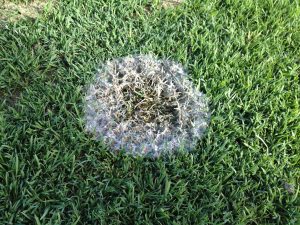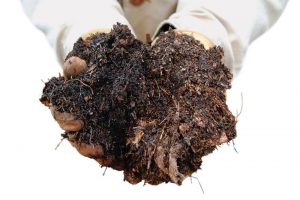Those wonderful autumn colours soon become a lawn nuisance. Let’s take a look at falling leaves lawn care and the troubles caused by leaves on your lawn.
As the summer fades so do the leaves on deciduous trees – that’s trees that aren’t evergreens and lose their leaves every autumn. The tree begins to extract anything of use from the leaves and the toxins that are left behind provide the spectrum of autumn colours we all know and love. However, whilst they look wonderful on the tree and are great to walk through and kick around in a woodland, leaving them on your lawn for any period of time can cause some major issues.
What are leaves a problem on my lawn?
- Leaves shade the grass causing die-back
- Leaves can encourage lawn disease
- Leaves cause gappy lawns which in turn encourages moss and weeds
Are fallen leaves useful?
In their natural environment, that’s woodland, the leaves that fall at the base of the tree that was once their host play an essential part in the circle of life. These leaves, once wet, begin too break down. They act as an essential food source for the plethora of fungi that call the woodland their home. Fungi are great at breaking down leaves and in turn they hold a mutually beneficial relationship with the tree roots, helping them to access essential micro-nutrients.
So why isn’t there a mass of leaves built up over the years of autumn fall?
The leaves at the base of the tree don’t stay on the surface for long. They are shredded by insects. Some are dragged into the soil by worms. Once there they are broken down further, encouraging bacterial activity and contributing essentially to the health of the soil.
Watch this BBC short film on worms and how wonderful they are
Don’t leave the leaves
I sometimes wonder whether they are called leaves so you leave them alone! We do our best to remind our lawn care customers of the importance of not letting leaves lay on the lawn. We know it seems like a never-ending task, but during the leaf-fall season it really is important to get out there and get them off the lawn. Ideally you should be doing this every week.
3 easy tricks to leaf clearance
- Use a leaf blower to push the leaves under shrubs – leave them there to decompose
- Use your lawn mower and collect the leaves in the bag
- Invest in a lawn leaf vacuum
Read these reviews of the best leaf blowers and best lawn vacuums
But why is this so important?
Green leaf plants need sunlight to survive. Once that light is blocked out they will soon begin to suffer. They use this light to create food, without it they starve to death. In addition, a build up of leaves on the grass soon begins to prevent air circulation. If air can’t reach the surface of the soil then there will be a lack of oxygen in the soil and that means that all those beneficial insects, essential for healthy soil, will begin to die and when their population is decreased so is the health of the soil.
Soil aerobics – yes, really!
There are many different bacteria within your lawn soil. The good guys are essential for soil health. They help protect and feed your grass plants. Without them the lawn will never be green and healthy. Then there’s the bacteria baddies. Trying to attack the plants and cause them harm. The important thing to remember is that good bacteria reproduce in an aerobic environment – one with lots of oxygen. Bad bacteria like an anaerobic soil, without air. So, reducing the amount of air able to get into your lawn soil means that the bad guys are going to beat the good guys. And that’s super bad for your lawn.

Snow-mold in a winter lawn
Fungi
What conditions do fungi like to live in? Damp and dark conditions I hear you shout. In the autumn when the leaves fall, rain is rarely far away. Once those fallen leaves and the grass leaf and the rain all get together for a party on your lawn the conditions are perfect for the fungi to join the party. Most parties like a fun-guy but your lawn doesn’t. I’m doing my best to make this entertaining, but what I’m really trying to say is that wet leaves left on your lawn create the ideal conditions for your lawn to be attacked by damaging lawn disease.

Moss loves bald patches
Moss loves the autumn. Damp days, low light levels, none of that nasty hot sunshine to dry it out. When moss spores settle on bare soil it quickly establishes and begins to compete with your lawn grass plants. So, by allowing leaves on your lawn to cause areas of grass to become weak or maybe die back all together, you are creating the ideal growing environment for moss. We don’t want mossy lawns because its just creating more work in the spring.
Now here’s the great news
Leaf compost is brilliant for your beds and borders and it’s really easy to make. It does take a couple of years but follow our steps below then sit back and wait for some free black gold…

make your own black gold
4 simple steps to make your own leaf compost
- Place the leaves into some black bags.
- If they are not already wet then add a splash of water.
- Throw in a trowel full of soil from your garden and tie up the bag.
- Punch a few holes in it to let air in and find somewhere out of site to store them.
By the following autumn the leaves will have been broken down, they can be added to the top of your beds and borders as a mulch and you can repeat the process all over again. Easy peasy lemon squeezy!

 Established 2016
Established 2016



